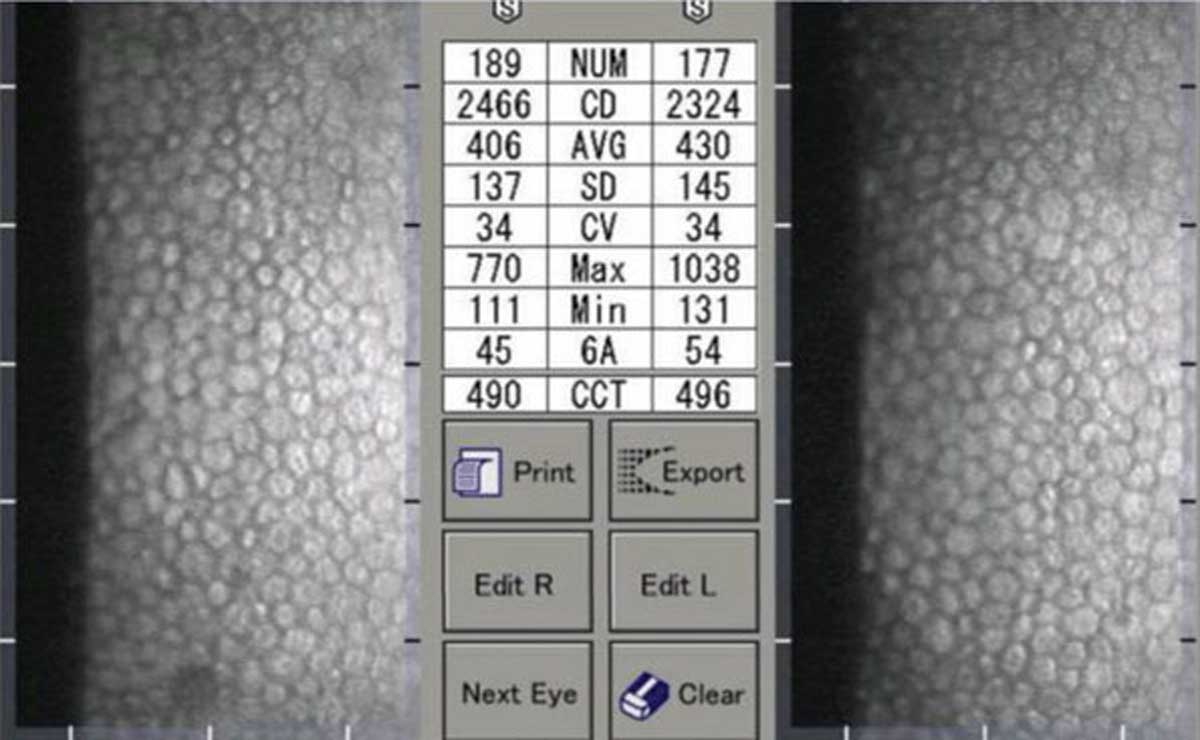 |
| Beware of endothelial cell loss in patients post-glaucoma surgery. Photo: Daniel Epshtein, OD. Click image to enlarge. |
While glaucoma surgery can effectively reduce IOP and prevent the progression of optic nerve damage, a known complication of these procedures is corneal endothelial cell loss. In recent years, we have seen the increasing use of MIGS in combination with cataract surgery as a safer, earlier alternative to trabeculectomy or tube shunt implant. Since cataract surgery can also cause endothelial cell density loss, it is important to understand the implications for patients.
Researchers recently conducted a systematic electronic database search for randomized controlled trials, prospective non-randomized studies and observational studies in several databases. Their analysis included trabeculectomy, glaucoma filtration surgery and MIGS among patients with ocular hypertension, primary and secondary open-angle glaucoma, normal-tension glaucoma and angle-closure glaucoma.
Thirty-nine studies were included in the current quantitative analysis. At 12 months of follow-up, the data showed that, as a whole, endothelial cell density loss was not clinically significant after glaucoma surgery. Overall, the study authors observed an endothelial cell density loss of less than 30% up to 24 months follow-up for the majority of studies included in their review, which is below the safety threshold predefined by the FDA.
However, they did find notable differences between procedures, including some that challenge assumptions. The study authors reported that the overall mean endothelial cell density loss associated with Schlemm’s canal procedures—without implant—was lower compared with Schlemm’s canal implantable devices. Findings also demonstrated that endothelial cell density loss following Express shunt implantation increased up to 60 months when compared with baseline. No significant difference was seen between aqueous shunt surgery and the fellow eye up to 24 months. However, the researchers reported a significant difference favoring the location of the tube in the vitreous cavity compared with the anterior chamber.
Interestingly, tube shunts may not necessarily be inherently more dangerous to the endothelium than trabeculectomy. “There is low certainty evidence to suggest that glaucoma surgery involving long-term implants has a greater extent of endothelial cell density loss than glaucoma filtration surgeries without the use of implants,” the study authors stated in their paper, published in Ophthalmology. They noted that the results of this review support long-term follow-up to assess endothelial cell density loss and corneal decompensation following implantation of glaucoma drainage implants.
“Implanted device studies should measure endothelial cell density as part of safety surveillance. The start of endothelial cell density loss may vary between devices and may happen at different timepoints,” they concluded. “Therefore, high quality randomized controlled trials with sufficient follow-up duration and sample size are necessary to estimate the proportion of patients with endothelial cell density loss of greater than 30% and corneal sequelae after glaucoma surgeries that involve placement of long-term implants.”
Fang CE, Mathew RG, Khaw PT, et al. Corneal endothelial cell density loss following glaucoma surgery alone or in combination with cataract surgery: a systematic review and meta-analysis. Ophthalmology. March 21, 2022. [Epub ahead of print]. |

